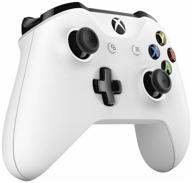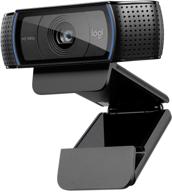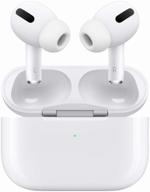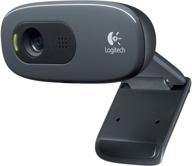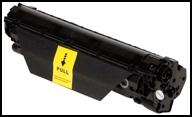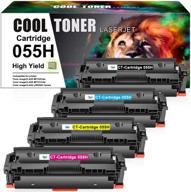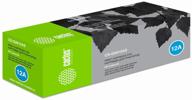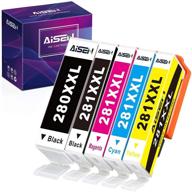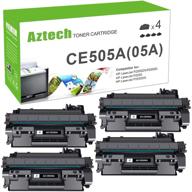Similar products
Save Money on Printer Ink
Printer ink can be expensive, with name brand ink cartridges costing $30-50 each. Fortunately, there are several ways to save money on ink without sacrificing print quality.
Another interesting products
Use Generic Ink Cartridges
Generic third-party ink cartridges can cost up to 50% less than OEM cartridges. For example, a black HP 61XL cartridge costs around $35, while a compatible alternative is only $15. While generics used to have a reputation for poor quality, many modern ones rival OEM cartridges while costing significantly less. However, make sure to buy from a reputable brand like LD or InkPro to ensure compatibility and performance.
Top products in 🖨️ Printer Ink & Toner
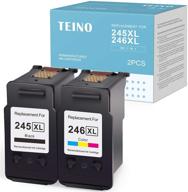

12 Review

Refill Cartridges
Another option is refilling empty OEM cartridges instead of buying new ones. Cartridge refill kits cost around $10-15 and come with enough ink to refill a cartridge 2-3 times. Refilling cartridges yourself can save up to 80% compared to buying new. However, it can be messy if you don't have the proper equipment.
Buy in Bulk
Purchasing ink in bulk multiline packs can lower the cost per cartridge. For example:
- HP 61 2-pack black cartridges: $72
- HP 61 4-pack black cartridges: $110
As you can see, buying a 4-pack reduces the per cartridge price from $36 to $27.50. Bulk packs are available for both OEM and generic cartridges.
Ink Delivery Subscriptions
With an ink subscription service from companies like Amazon Ink or HP Instant Ink, replacement cartridges are automatically shipped to you before you run out. Prices start at $5 per month for occasional printing. While not the cheapest option upfront, the convenience can be worth it for frequent printers.
Use Draft Mode
Switch your printer settings to "draft" quality mode. Draft mode uses much less ink, ideal for documents that don't require crisp image quality. For example, printing in draft mode can reduce ink usage by up to 50% compared to normal mode.
Don't Print Unnecessarily
Cut down on printing to conserve ink. Some ways to reduce unnecessary printing:
- Preview documents before printing to catch mistakes
- Only print sections of web pages you need
- Read documents on screen when possible
- Set printers and copiers to default to double-sided
Being mindful about what you print can significantly reduce ink consumption over time. Combine these strategies to maximize savings on printer ink costs.
Generic vs. Name Brand Printer Cartridges
When it's time to replace your printer ink cartridges, you have two main options - name brand OEM cartridges from the printer manufacturer, or generic third-party cartridges. But is it worth paying extra for OEM cartridges? Here's an overview of the key differences.
Price
The most noticeable difference is the price. For example:
| Cartridge | OEM Price | Generic Price |
|---|---|---|
| HP 61 Black | $35 | $15 |
| Canon PGI-250 Black | $36 | $20 |
As you can see, generic cartridges can cost 50% less on average compared to OEM equivalents. This adds up, especially for high volume printing.
Print Quality
OEM ink is specially formulated to work flawlessly with your printer model. Many people believe OEM cartridges produce better print quality, with sharper detail and more accurate colors. However, print quality from top generic brands has improved dramatically in recent years. For most everyday document printing, a good generic will be hard to distinguish from OEM.
Page Yield
Page yield refers to the number of pages a cartridge can print. OEM tend to have slightly higher yields on average. However, a generic may still be more cost effective per page. For example:
- OEM: 350 pages for $35 = 10 cents per page
- Generic: 300 pages for $15 = 5 cents per page
Reliability
OEM cartridges are engineered for maximum compatibility and performance with your printer. Some consumers report more inconsistent results from generics, like clogged nozzles or faded prints over time. However, quality generics made by reputable companies like LD and InkPro have very good reliability these days.
Features
OEM cartridges may come with nice-to-have features that generic brands lack, such as:
- Chips that display ink levels on-screen
- Ability to hot-swap cartridges without losing print jobs
- Full software support from the printer manufacturer
These features may be important for some professional settings but are less of a concern for general home and office use.
Warranty
OEM cartridges come with a manufacturer warranty against defects. Generic brands typically have much shorter or non-existent warranties. If you get a dud generic cartridge, you may have to eat the cost.
Recycling
Many printer brands offer free recycling of their OEM cartridges when you're done with them. You may have to pay a fee to recycle empty generic cartridges.
Overall, generic cartridges offer excellent value for most home and small office users looking to save money. But OEM may still be worth the premium for professional-quality photo printing or mission-critical business applications.
Refilling Cartridges vs. Buying New
When your printer runs out of ink, you have two choices - buy a brand new replacement cartridge, or refill your existing empty cartridge. What are the pros and cons of each option?
Cost Savings
The biggest incentive to refill cartridges is the potential cost savings. For example:
- HP 61XL Black cartridge: $36 new
- HP 61XL Black refill kit: $13
As you can see, refilling your own cartridge can cost over 60% less compared to replacing it. A typical cartridge can be refilled 2-3 times before needing to be replaced, saving you $50 or more per cartridge.
Environmental Impact
Refilling also has environmental benefits. Throwing out empty cartridges creates plastic waste and e-waste that ends up in landfills. Refilling cuts down on the number of new cartridges that need to be manufactured and shipped.
Quality of Printing
Some users report a slight dip in print quality over time when refilling cartridges multiple times. The printer heads can get clogged with repeated refilling, causing issues like:
- Faded colors
- Streaking
- Smudged text
- Misaligned prints
However, this can be minimized by using high quality refill ink and properly cleaning the print heads.
Convenience
Refilling cartridges takes more time and effort compared to popping in a brand new OEM cartridge. The refilling process can also be messy if you don't have the proper equipment and workspace.
Here are the basic steps to refill a cartridge:
- Assemble materials - refill kit, rubber gloves, paper towels, etc.
- Clean exterior of cartridge
- Carefully open filling ports without damaging cartridge
- Add ink using syringe, bottle, or refill kit
- Seal filling holes and clean cartridge
- Rinse and dry printer heads
- Re-install cartridge and run test prints
The whole process can take 15-30 minutes. For some users, the savings aren't worth the hassle.
Recycle and Reuse
Many retailers and manufacturers offer recycling programs for empty OEM cartridges. You can also reuse them by refilling them yourself or taking them to a third-party refiller. Refilling allows you to get more use out of your cartridges before recycling.
Weigh the cost savings against any potential dip in quality and added effort. For moderate to high volume printing, refilling your own cartridges can be well worth it.
Buying Printer Ink in Bulk/Multipacks
Printer ink cartridges can be expensive when purchased individually. Luckily, many retailers offer money-saving options like bulk packs and multipacks. Here's an overview of the benefits of buying ink in bulk.
Bulk Packs
Bulk packs contain multiple cartridges of the same type. For example, a pack could include:
- 3 black cartridges
- 5 color cartridges
- 10 black and 10 color cartridges
Buying in these larger quantities can significantly reduce the per-cartridge cost. Let's look at some real pricing examples:
| Quantity | Price | Per Cartridge |
|---|---|---|
| HP 61XL Black (single) | $35 | $35 |
| HP 61XL Black (3 pack) | $90 | $30 |
| HP 61XL Black (10 pack) | $200 | $20 |
As you can see, the per cartridge cost drops when purchasing bulk quantities. Buying a 10-pack lowers the individual cartridge price almost 50% compared to buying singly.
Multipacks
Multipacks include an assortment of different cartridge types for your printer. For example:
- 2 black, 1 cyan, 1 magenta, 1 yellow
- 3 black, 2 cyan, 2 magenta, 2 yellow
Like bulk packs, multipacks allow you to purchase various cartridges together at a discounted combined price versus individually. You'll save money while stocking up on all the ink colors you need.
Who Should Buy in Bulk?
Bulk buying makes the most sense for high volume printers who go through ink quickly, such as:
- Offices
- Schools
- Print shops
- Large households
When you know you'll steadily use all the cartridges, the savings add up quickly. For light users, it may be smarter to only buy what you need when you need it.
Tips for Buying Bulk Ink
- Make sure to compare per cartridge prices, not just total pack prices.
- Buy from reputable retailers to ensure authenticity.
- Check expiration dates if planning to store for the long term.
- Break down bulk packs into individual cartridges once opened for easier storage.
- Have a dedicated printer for each type of bulk ink to avoid mixing.
Overall, buying printer ink in bulk packs and multipacks can lead to big cost savings on high volume printing. Just make sure it aligns with your actual usage.
Printer Ink Subscriptions
Printer ink subscription services have emerged as a convenient way to get replacement cartridges without having to manually reorder them. Here's how they work and who they benefit.
How It Works
With an ink subscription, replacement cartridges are automatically shipped to your door on a schedule. For example:
- Amazon Ink: Ships cartridges every 1, 2, or 3 months based on estimated usage.
- HP Instant Ink: Ships monthly based on your chosen plan allowance of pages printed.
- Epsom ReadyPrint: Ships new cartridges when existing ones reach 20% capacity.
The service keeps track of your printer usage and ink levels. New cartridges arrive just before you need them so you never run out unexpectedly.
Pricing Plans
Ink subscriptions base pricing on the number of pages you expect to print per month. Monthly fees typically range from $1-15. Here are some example plans from popular services:
| Plan | Monthly Fee | Pages Included |
|---|---|---|
| Amazon Ink: Basic | $1.25 | 15 |
| HP Instant Ink: Occasional | $2.99 | 50 |
| Epsom ReadyPrint: Small Office | $9.99 | 150 |
Going over your included pages incurs overage fees around 10-20 cents per page. Unused pages can rollover month-to-month with some plans.
Benefits
Ink subscriptions offer several key benefits:
- Convenience: Cartridges arrive when you need them without having to manually reorder.
- Cost savings: Plans can effectively lower per page printing costs.
- Waste reduction: Only get ink you need reducing environmental impact.
- Predictable budgeting: Fixed monthly fee makes costs consistent.
Ideal Users
Ink subscriptions work best for households and offices with regular, predictable printing needs. Light or sporadic printers may be better off buying individual cartridges as needed.
Constant high volume printing can lead to overage fees negating potential savings. Moderate but consistent usage around 50-150 pages per month sees the most benefits.
Cancelling and Pausing
Most services allow you to cancel or temporarily pause your subscription anytime if printing needs change:
- Give advance notice like 30 days to properly cancel.
- Pause for vacation holds of 1 week up to 3 months.
- Reactivate when ready to resume service.
Read the specific policies carefully when signing up.
Tradeoffs
Before committing to an ink subscription, be aware of some potential downsides:
- May be more expensive for very light users.
- Have to use proprietary cartridges from the service provider.
- Printer model support can be limited.
- Longer commitment than buying cartridges individually.
Overall, ink subscriptions provide a hassle-free option for households and offices to conveniently manage their printing supplies.
Using Draft Mode to Conserve Printer Ink
Printing documents and photos in high quality modes looks great, but uses up your precious printer ink quickly. Here's how switching to draft mode can help you conserve ink when top quality isn't necessary.
What is Draft Mode?
Draft or fast mode is a print setting that uses less ink to conserve cartridges and lower cost per page. It does this by:
- Printing at lower dpi resolution like 300x300 dpi vs 600x600 for normal.
- Using fewer colors for photos and graphics vs full color for normal mode.
- Printing bi-directionally instead of just unidirectionally.
The end result is visibly lower print quality, but pages use 30-50% less ink compared to standard or best modes.
Print Quality Differences
Here are some typical differences between standard and draft print quality:
| Standard Mode | Draft Mode |
|---|---|
| Crisp, sharp text | Grainy text edges |
| Vibrant color graphics and photos | Washed out colors |
| Rich blacks | Grayish blacks |
Fine details in images are lost and color accuracy suffers. But text is still perfectly legible for basic documents.
When to Use Draft Mode
Draft mode works best for:
- Rough drafts
- Internal documents
- Forms and applications
- Documents for proofing or review
- Personal notes
Essentially, any text-focused document where print clarity isn't critical. The lower quality is only noticeable on close inspection.
How to Enable Draft Mode
The steps to switch to draft mode vary by printer model and software. But generally you can change the setting:
- Through your printer preferences or properties dialog box
- In the print window when selecting a printer
- Via quick setting toggles on the main print screen
Draft mode may also be labeled "fast, quick, eco, ink saving" or similar. Just choose the option that uses the least ink.
Other Draft Mode Benefits
Aside from preserving ink, draft mode offers other advantages:
- Prints faster by requiring less ink coverage.
- Creates less printer noise due to bi-directional printing.
- Uses less energy than higher quality modes.
So it saves time and other resources in addition to ink when high print quality isn't required.
Use Sparingly
Draft mode isn't recommended for documents where quality matters like:
- Final reports
- Client deliverables
- Sales materials
- Photos
Only use it for internal or personal print jobs where you can tolerate lower quality to save ink. Switch back to standard mode when top print clarity is preferred.
How Amazon Prime Saves on Ink and Toner
A Prime subscription provides members with benefits like:
- Free 2-day shipping on eligible items.
- Discounted 1-day and same-day delivery fees.
- Access to exclusive Prime-only deals.
This can lead to savings on printer supplies if you order frequently enough to take advantage of the fast free shipping. Prime also gives you access to Ink and Toner subscription plans that provide discounted supplies on a recurring basis.
Amazon's Terms of Service
However, Amazon prohibits use of Prime benefits "for any commercial purpose other than selling on Amazon." This means you cannot exploit Prime solely to buy supplies for a business at reducedpersonal cost. Doing so could result in membership cancellation.
Ethical Use of Prime
The best practice is to use your Prime subscription appropriately as intended by Amazon - for your own personal and household use or for your Amazon selling business. Trying to misuse the benefits purely for financial gain violate's Amazon's rules.
The bottom line is Prime can lead to ink and toner savings for personal use, but should not be exploited solely for commercial benefit. Make sure to use your membership ethically and as intended.
Brother Toner Cartridges
Brother is a popular brand for printer ink and toner cartridges. Here are some key points about Brother toner cartridges from the search results:
Brother Toner Compatibility Chart
Brother toner cartridges are compatible with a wide range of Brother printers. If you are looking for a specific toner cartridge for your Brother printer, you can refer to the Brother toner compatibility chart. The chart provides a list of Brother printers and the toner cartridges that are compatible with them. Brother toner cartridges come in standard-yield and high-yield options. Some popular Brother toner cartridges include Brother TN420, TN450, TN530, TN560, TN540, TN570, TN550, TN580, TN620, TN650, TN630, TN660, TN720, TN750, TN730, and TN760. If you are looking for a more affordable option, you can consider buying compatible versions of Brother toner cartridges from third-party manufacturers. LD Products, True Image Tech, Supplies Outlet, and Advanced Filing Concepts are some of the companies that offer compatible Brother toner cartridges. When installing a Brother toner cartridge, make sure to remove the orange protective clip from the cartridge before installation. The toner cartridge should click into the drum unit easily. Make sure it is locked in securely, otherwise, it will not fit into your machine.









